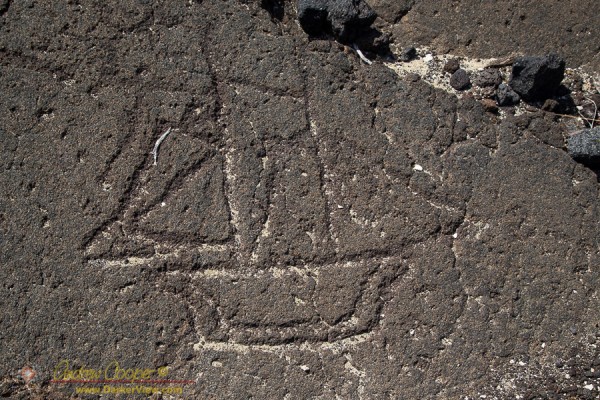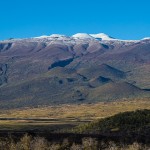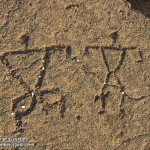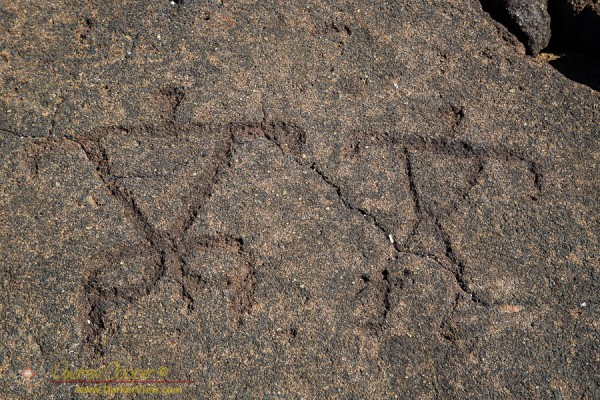
Tag: Hawaiian
The Name of Mauna Kea
It has gotten a bit confusing of late. As the argument rages over the summit of Mauna Kea even the name of the mountain is something that few can agree upon. Mauna Kea, Maunakea, Mauna Akea, Ka Mauna a Kea, or Mauna a Wakea are all used by the various parties involved. This is not an idle question, what to call the mountain, the various names are used to present a point of view, a context from which to view the mountain.

“The districts of Amakooa and Aheedoo are separated by a mountain, called Mauna Kaah, which rises in three peaks, perpetually covered with snow, and may be clearly seen at 40 leagues’ distance… On doubling the East point of the island, we came in sight of another snowy mountain, called Mouna Roa.” – Journal of the Cook expedition March 17791
The name of this mountain is found in the journals of the Cook expedition, recorded as “Mauna Kaah”. This would be the first record of the mountain’s proper name in writing, and possibly the most accurate record of the ancient usage. The journal does not translate Kaah, but does translate Mauna as mountain. Attempting to translate kaah or kaʻah using modern references does not seem to yield any useful result.
“the summit of the mountain Monakaa, which had been obscured by the clouds since our making the land, was now clear” – Captain Joseph Ingraham, May 22, 1791
Petroglyph
Petroglyph
Hawaiʻian Diacrital Test Post
This post is just a test of Hawaiʻian diacritical marks to check rendering on different systems. Let me know if this displays properly on your computer…
A bit of the Kumulipo…
O ke au i kahuli wela ka honua
O ke au i kahuli lole ka lani
O ke au i kukaʻiaka ka la
E ho’omalamalama i ka la
O ke au i Makaliʻi ka po
O ka Walewale hoʻokumu honua ia
O ke kumu o ka lipo
O ke kumu o ka Po i po ai
O ka Lipolipo, o ka lipolipo
O ka lipo o ka La, o ka lipo o ka Po
Po wale ho-i
A bit of text clipped from the UH College of Hawaiian Language website…
Ka Haka ʻUla O Keʻelikōlani
Koleke ʻŌlelo HawaiʻiKa Haka ʻUla O Keʻelikōlani ʻO ka ʻŌlelo ke Kaʻā o ka Mauli
Ua hoʻokumu ʻia ʻo Ka Haka ʻUla O Keʻelikōlani ma ke Kulanui o Hawaiʻi ma Hilo i ka MH 1997, ʻo ia ke Koleke ʻōlelo Hawaiʻi mua o ka honua nei a puni. Ua kapa ʻia kona inoa no ke aliʻi wahine ʻo Luka Keʻelikōlani Keanolani Kanāhoahoa ma muli o kona kūpaʻa wiwo ʻole ma hope o ka ʻōlelo a moʻomeheu Hawaiʻi.
Flying to the Islands
With a few flights back and forth to the mainland this month a few obsrvations have come to mind. One… I relly prefer to fly Alaskan Airlines to and from Hawaii.
A few reasons for this… There seems to be just a bit more room in the seats, my knees do not jam into the seat infront of me. The snacks are notably better, even if you have to pay a few bucks for them. The 737’s Alaska flys have bigger overhead bins and with fewer passengers on the smaller aircraft, they load and debark a lot faster.
The overall experience of flying on Alaska just comes off better. The prices are about the same. Allt things considered Alaska will be my choice flying to and from the islands, if I have a choice.
Ancient Messages
The ancient lava flows of South Kohala hold messages from the past. The old Hawaiians often carved petroglyphs into the smooth pāhoehoe along the shoreline. Laboriously pecked into the dark rock are images of men, turtles, canoes and more. Memories from a lost time, messages left by those who lived here so long ago.
Many of the images seem to be similar to modern grafitti, an attempt to make a mark that will be seen by others, maybe to record some memorable deed. Or perhaps simply to leave a mark that will outlive the artist, the hope of immortality carved in stone.

Today, a century or two later, modern visitors can look down and wonder about those who carved the pictures. Did the man with an oar overhead complete some particular feat? Did he win the race against a rival? Complete a first voyage to an island over the horizon and return to boast of the journey?

